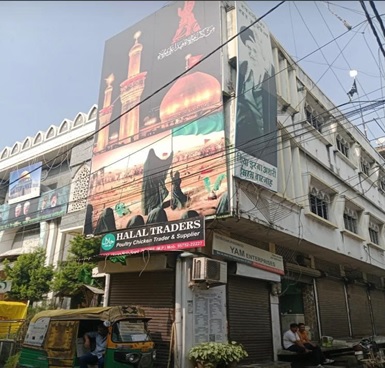
By sabrangindia
On November 3, a controversy erupted in Indore, Madhya Pradesh, after a Muharram poster displayed outside the Shia Imam Bargah in the Kagdipura area was falsely misrepresented online. Right-wing groups quickly seized on the imagery, claiming that the poster, which featured a saffron flag, was promoting the concept of “Ghazwa-e-Hind”—a term linked to extremist narratives of a supposed Islamic conquest of India. These claims, which spread rapidly on social media, falsely portrayed the saffron flag as a symbol of aggression aimed at the Hindu community. This sparked a heated political debate, fuelled by misleading allegations and widespread misinformation, despite the poster’s actual meaning being tied to religious observance and the commemoration of the Battle of Karbala.
Typically, such posters are displayed during Muharram and Arbaeen (in August) and remain up until they fade or are replaced by new ones. The poster in question was part of a longstanding tradition within the Shia Muslim community, serving as a tribute to Imam Hussain’s sacrifice, and was not meant to convey any political or sectarian message.
The situation escalated when BJP Indore Vice-President Aklavya Singh Gour (Convenor of Hindu Rakshak Sangathan), son of MLA Malini Gour, posted on X on November 3, 2024, accusing the Muharram poster of promoting terror and challenging the administration’s peacekeeping efforts. He called for immediate action, urging local authorities to identify and punish those responsible for displaying the poster.
He stated that “This poster depicting the terror of ‘Ghazwa-e-Hind’ put up on a mosque in Kagdipura area of Indore is mocking the administration’s peacekeeping system. The administration is requested to take immediate cognizance and take strictest action against the culprits.”
This story was originally published in sabrangindia.in. Read the full story here.

